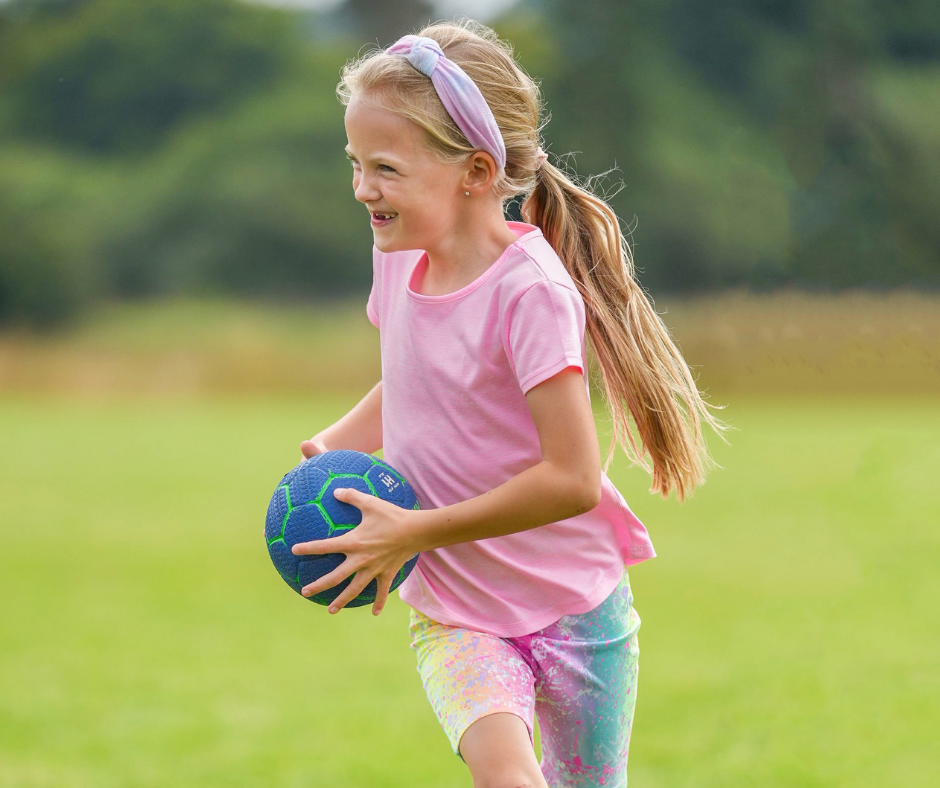
Heart Health + Active Learning Valentine's Day Activities
Holidays are the perfect time to harness students’ energy and excitement into active learning opportunities, and Valentine’s Day is no exception. Here are some of our favorite heart-healthy and valentine-centered classroom activities for February 14th. These ideas feature reusable materials so you can try one activity or many!
VALENTINE BINGO
Use a Valentine’s Day theme to play a fun game of Bingo. Cut out paper hearts, and write a Valentine or other vocabulary word on each heart. Give each student a blank Bingo board. Tell students to write vocabulary words randomly on each square. Valentine vocabulary words might include love, heart, card, friend, family, you, I, pretty, nice, kind, and like. For older students, use more complex words such as valentine, bow, arrow, holiday, special, celebrate, candy, flowers, cupid, balloons, envelope, letter, stamp, chocolate, February, and mailbox.
Then, randomly select a vocabulary heart from a bag, and ask students to mark the word that is called. Repeat until a student gets five hearts in a row across, down, or diagonally. The first student to get five hearts in a row should jump up and announce, “Happy Valentine’s Day!”
VALENTINE VOCAB
Use a Valentine’s Day theme to practice spelling words. Make a list of Valentine’s Day words that your students may know such as love, heart, card, friend, you, I, pretty, nice, kind, like, etc. For older students, use words such as valentine, bow, arrow, holiday, special, celebrate, candy, flowers, cupid, balloons, envelope, letter, stamp, chocolate, February, and mailbox.
- Spelling: Play a word guessing game with the class. Have a student choose a Valentine’s Day word from a list you create. Write a blank on the board for each letter. Have students take turns guessing letters in the word. When a guess is correct, the student who chose the word should write the letter in the correct blank(s). If a guess is incorrect, the student should write the letter below the word blanks. When the class completes the word, let another student choose a word. If desired, have older students say whether the letters they guess are consonants or vowels.
- Nouns vs. Adjectives: After students have spelled the majority of the words, review the concept of nouns and adjectives. Ask students to stand up. If desired, include verbs as well. Then, call out each word. If students think the word is an adjective, they should jump. If the word is a noun, students should squat with their arms up. (If you include verbs, have students wiggle and shimmy for verbs.)
- Even More Spelling: Divide the class into small groups. Give each group large paper letters needed to spell spelling words. Then, say the word and ask each group to race to spell the word (correctly!) the fastest.
GET FRUITY
Use heart-healthy fruits and create colorful fruit tags for these activities. Be sure to bring to class fruits including plums, apples, bananas, oranges, blueberries, grapes, pears, and strawberries.
- Reading and Writing: Read each tag as a class, focusing on the fruit word. Hold up the fruit that corresponds to each tag. Then, have students write each fruit word in the air as the class spells it aloud. Depending on the level of your students, you may need to write the fruit names on the board as a guide.
- Matching Game: Place baskets of fruit from all or some tags in different locations in the classroom. Assign a group of students to go to each location. Ask each group to work together to read the tags and match the correct tag with the corresponding fruit. If desired, hold a relay race where each group of students races to match tags and fruits.
- Extend: Print and let the students bring home a fun chart for tracking how many fruits and vegetables they eat everyday.
HEARTY MATH
- Counting/Addition: Have students stand in a circle. Each student should have a heart shape. Give one student a basket, and ask the student to place the heart in the basket and pass the basket around the circle. Each time the basket is passed to another student, the student should place their heart in the basket. Occasionally, ask a student to take out the hearts. Then, count them together as a class (by ones, twos, fives, etc.). Have students do one jumping jack or other motion for each heart they count.
- Heart Word Problems: After the counting/addition game, go around the circle again and ask each child to take a heart out of the basket. Have students work together to solve word problems, using the hearts if needed. For example, “There were 14 hearts in the basket. Lucy and Sam took out two hearts. How many hearts are left in the basket?”
HEALTHY GUESSING
- Estimation: Bring in a basket of red fruits such as strawberries, apples, grapes, or cherries. Ask each student to guess how many of each fruit are in each category. (And don’t tell them the answer.) Then, ask each student to add the numbers together to calculate a guess for the total number of fruit. Have students write their guesses on a piece of paper. After each student guessed, count the fruit to find out whose guesses were closest. Congratulate the winners!
- Odds/Evens Counting: Explain the concept of odd and even numbers. Count the fruits aloud as a class. As you count, students should squat for the odd numbers and then jump and reach toward the sky on the even numbers. After each student guessed, count the fruit to find out whose guesses were closest. Congratulate the winners!
HEALTHY SNACKS
While food doesn’t necessarily involve active learning, we all know that healthy foods promote strong bodies and growing brains. As delicious as candy hearts and chocolate can be, encourage parents to provide heart-healthy options instead. Suggest red snacks such as strawberries, pomegranate seeds, cherry tomatoes, watermelon, sliced red apples, cherries, or red raspberries.
Happy Valentine’s Day!





